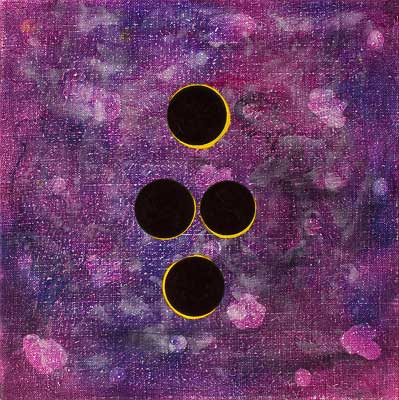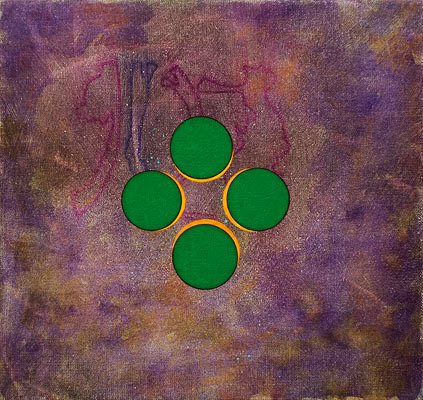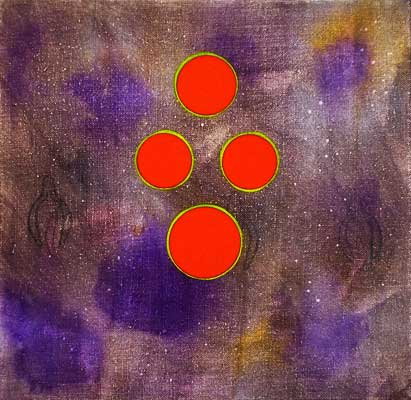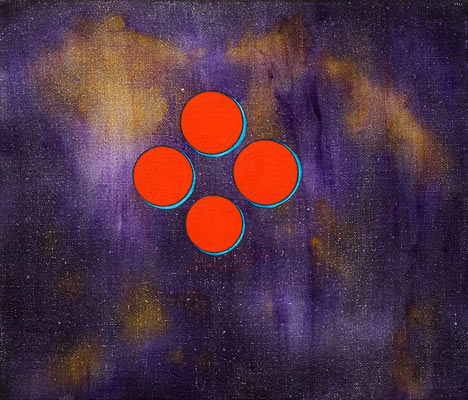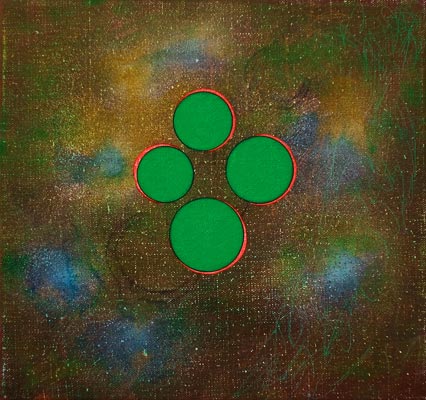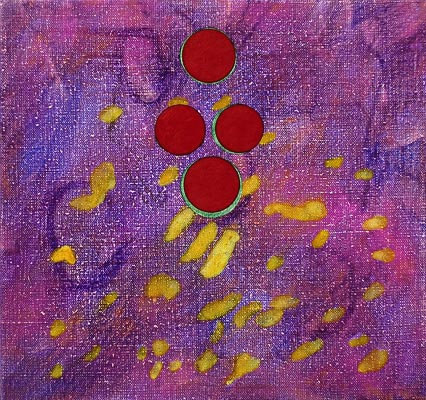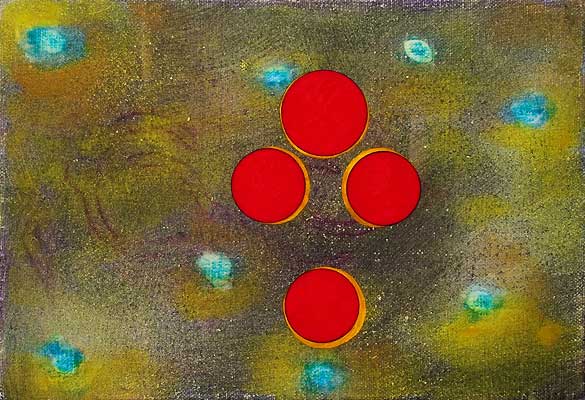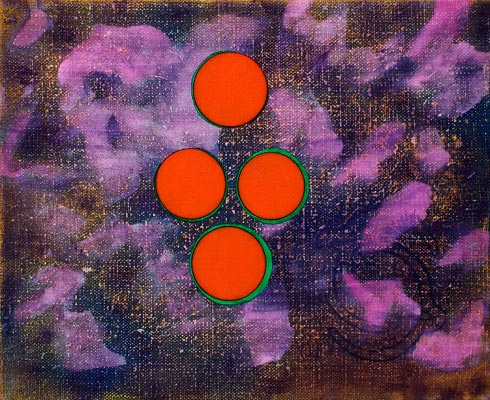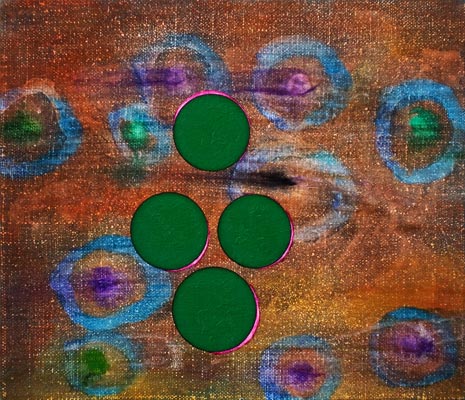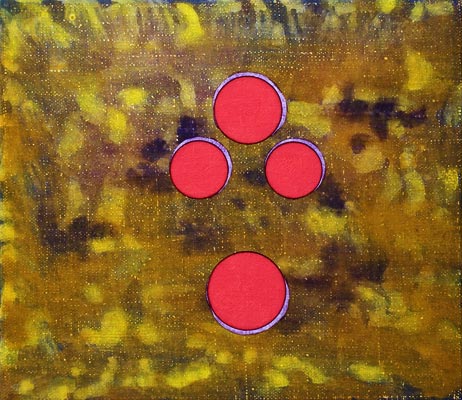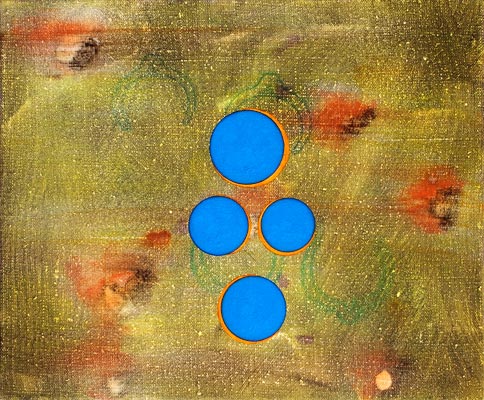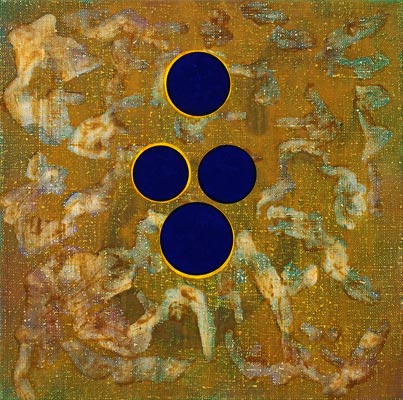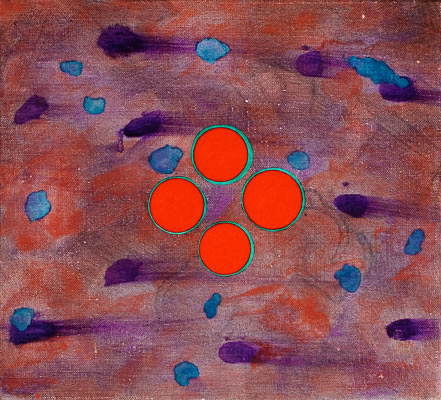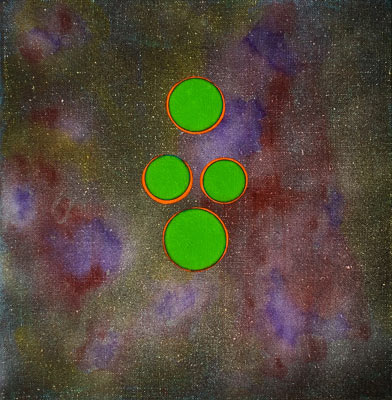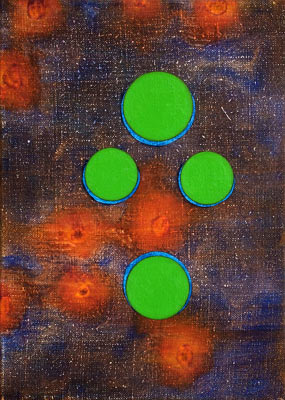Stereoscopic Image and Perspective Construction
sitemap
drawings
paintings 1 2 3 4 5 a b c -
- A B . . . . . . . new
installations
projects
reviews
titles of ...
paintings not created yet ...
Stereoscopic Image and Perspective Construction
Tim O’Riley
Duchampoptics
‘Unknown reality’ works like a stereoscope.
Octavio Paz
(Marcel Duchamp: Appearance Stripped Bare, p. 147.)
Given Duchamp’s life-long interest in optical illusions and his particular attitude concerning the viewer’s role, it would be useful to look more closely at these particular aspects of his work. Although there exist relatively few works, even a cursory look at his notes and writings reveals a wealth of ideas and propositions - some realized in actual works, some not - so much so that a thoughtful consideration of the visual work cannot be conducted without referencing the various notes.
Duchamp’s disavowal of what he called the ‘retinal’ in painting, his objection to art which ‘stops’ at the retina (arrêt à la rétine) is fundamental to his work in its appeal to the intellect. For him, art, or rather painting, is not an end in itself but a means of expressing or communicating something: “it should have to do with the gray matter, with our urge for understanding”.[1] Moreover, this appeal to the intellect is not confined to the artist’s working practice but finds a resolution through its reception in the eyes and perceptual apparatus of the spectator. Again, another famous utterance provides a useful angle from which to consider his work and its context: “The spectator makes the picture.”[2] In a talk given to the American Federation of the Arts in Houston in April 1957 entitled ‘The Creative Act’, Duchamp coined the term ‘art-coefficient’ which he explains as the difference between the artist’s intention and its subsequent realisation in the work, “like an arithmetical relation between the unexpressed but intended and the unintentionally expressed.”[3] In Duchamp’s theory, this realisation is art in its raw state (à l’état brût) which is refined by the spectator “as pure sugar from molasses.”[4] Duchamp’s creative act is therefore located not solely in the work itself but in the interaction between work and viewer for it is through this exchange that the work becomes part of the world. Octavio Paz describes this process of activation as constituting a difference between the artist's intention on the one hand and the viewer's interpretation on the other. He adds that implied in the viewer’s refining of the initial difference which constitutes the work is the creation of another difference while the work itself serves as a reference point for yet further differences. Paz puts it succinctly in the following: “The work makes the eye that sees it - or at least, it is a point of departure: out of it and by means of it, the spectator invents another work.”[5]
At the same time that the Cubists were theorising and formulating their working practice and after they had rejected Nude descending a staircase (1911-12) from their 1912 Salon, Duchamp took a job as assistant librarian in the Bibliothèque Saint Geneviève in Paris. He has said that he wanted to devote himself to his work without subjecting it to “any material obligation.”[6] The library gave him access to a wide variety of books and a note in À L’Infinitif (the so-called White Box) reads: “Perspective See catalogue of Bibliothèque St Geneviève / the whole section on Perspective: Niceron (Father Fr., S. J.) / Thaumaturgus Opticus [sic].”[7] Similar thoughts about perspective permeate much of his visual work as well as his writings and what is interesting at this stage in his life and career is his complete renunciation of the language of Cubism in favour of a method of systematic pictorial, spatial organisation which at the time was thoroughly ignored and disparaged by the avant-garde, an avant-garde from which Duchamp was rapidly distancing himself. In his own words, in The Bride Stripped Bare by her Bachelors, Even (1915-23, figure 1) he aimed to mix mathematical, scientific perspective with story and anecdote: “I was interested in introducing the precise and exact aspect of science, which hadn’t often been done, or at least hadn’t been talked about very much.”[8] The lower half of The Large Glass was accurately constructed using the principles of Albertian perspective. It was therefore based on a “complete knowledge of the arrangement of the parts” and invoked the precedents of the Renaissance in which the visual was subordinated to the Idea.[9]
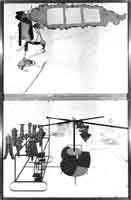
Figure 1
Marcel Duchamp; The Bride Stripped Bare by her Bachelors, Even, 1915-23.
The notes in the White Box referring to perspective and the fourth dimension suggest that Duchamp saw perspective as one type of representational method amongst others, suited in his system to the representation of a specific type of object or idea. The dreary, repetitive existence of the Bachelor machine located in the geometrically structured space of the lower half of The Large Glass is counterpoised with the nebulousness of the Bride in the upper half. Duchamp originally intended to photographically transfer the image of the Bride from the 1912 painting of the same name, a procedure which could not be further away from the painstaking perspective construction of the Bachelor Apparatus. As the following enigmatic note may indicate, perspective is used almost symbolically as indicative of the objects’ imperfection and their imprisonment within an imposed structure: “The Principle forms of the bachelor apparatus are imperfect: Rectangle, circle, square, parallelpiped, symmetrical handle; demi-sphere - i.e. these forms are mensurated... In the Bride - the principal forms will be more or less large or small, no longer have mensurability in relation to their destination: a sphere in the Bride will have any radius (the radius given to represent it is ‘fictitious and dotted’).”[10] Duchamp seems to be drawing a connection between the hierarchical status of the figures within the painting and the means through which they are depicted, perspective being used not just as a method for creating and manipulating pictorial space but as an expressive tool in itself.
The cast shadow plays an equally fundamental role in Duchamp’s system. Indeed, numerous notes propose that three dimensional objects are the ‘shadows’ of four dimensional entities. Duchamp speculated that this phenomenon took place in what he termed the ‘infra slim’[11] which Craig Adcock relates to Duchamp’s reading of E. Jouffret’s Traité Elémentaire de Géométrie à Quatre Dimensions (Paris, 1903) and in particular Jouffret’s description of the “’infinitely thin layers’ that exist between continua of different dimensions. A three dimensional object having become a two dimensional shadow is analogous to a three dimensional object ‘as’ an infinitely thin layer from the point of view of the fourth dimension.”[12] I mention this as it may be useful later to note that Duchamp considered the infra slim as a means of passing from the second to the third dimension. A further note dating from the same period and published as a facsimile by Matta in his magazine, Instead (1948), proposes the production of a painting “of shadows cast” on planar or curved surfaces in order to “obtain a hypophysical analysis of the successive transformations of objects. (in their formoutline).”[13] A not dissimilar note from the Green Box again proposes a painting or picture which brings together shadows cast by ”2.3.4 Readymades.”[14] This could possibly refer to Duchamp’s last conventional painting Tu m’ (1918, figure 2) in which the shadows of a bicycle wheel, hat rack and a corkscrew are projected across the canvas and traced in pencil. These shadows are distorted, anamorphic indexes of their original objects and imply oblique viewing positions at either side of the canvas. Krauss introduces the term ‘index’ in her discussion of 1970’s post-movement art which begins with a consideration of Duchamp’s work.[15] An index is a sign or token which indicates something. It is a trace of a particular cause, that cause being the thing referred to. Krauss calls the painting Tu m’ a “panorama of the index” and refers to the pointing finger contained therein as indicative of the “connection between the linguistic shifter ‘this...’ and its referent."[16] Similarly the title’s double pronoun, you/me, could be seen as indicative of the indexical relation between signifier and signified, for as Duchamp said about the painting, any verb can be added as long as it begins with a vowel. This prompts a question about the difference between a perspectival and an indexical representation. If a photograph could be said to bear an indexical relation to its subject/the scene depicted, as a record of the physical traces of varying amounts of light reflected by the scene, then what would be the relationship of the perspectival image to its subject, given that it is an essentially constructive procedure? Moreover, if to these two types of representation a third is added, namely stereoscopic or binocular representation, a form which asserts the corporeal aspect of actually perceiving the world or an image of it, what does this tell us about the viewer’s relationship to the image or the work of art, bearing in mind Duchamp’s fiat about the spectator making the picture?
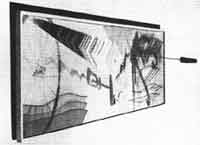
Figure 2
Marcel Duchamp; Tu m’, 1918.
Whilst staying in Buenos Aires in 1918-19, Duchamp produced his first stereoscopic piece which is classified in his body of work as a rectified or assisted readymade. This would suggest that he started out with a pre-existing stereo card which he subsequently altered. Entitled Stéréoscopie à la main, it consists of two photographs of a seascape with small boat placed side by side on a cardboard mount (figure 3). To the photographs Duchamp has added two pencil drawings which depict a diamond shaped construction rendered in wire-frame. The two photographic views seem, at first glance, identical, except for the lightness of the right hand image which may be due to either over-exposure of the original negative or perhaps more likely, a result of prolonged exposure of the fragile, fugitive photographic surface to light. Upon closer inspection the distance of the boat from the right hand edge of the respective photographs differs slightly. This indicates a disparity in the two views which would enable a viewer to construct a sensation of depth when the image is looked at through a stereoscope.

Figure 3
Marcel Duchamp; Stéréoscopie à la main, 1918.
This type of image and viewing apparatus were commonplace features in European middle-class households in the second half of the 19th Century and, one supposes, would have been familiar to the young Duchamp. The phenomenon of stereopsis was discovered as relatively recently as 1833 by the British scientist, Sir Charles Wheatstone although the fact that human vision relies on the differing views given as a result of the eyes’ separation was known to Leonardo (figure 4).[17] Wheatstone’s device, which he called a stereoscope, incorporated two hand-drawn images of an object which mimicked the disparity in the left and right eye viewpoints (figure 5).[18] These were placed opposite each other and viewed through a pair of mirrors oriented at 45° to the images and at 90° to each other. The device allowed the respective eyes to see only the image intended for them with the brain fusing the two disparate images into a virtual three dimensional image of the depicted object. Points of correspondence in the two images given to the eyes indicated a point on the virtual object which coincided with the picture plane, while points of non-correspondence (the term is used in psychology) indicated a point on the virtual object which was located behind or in front of the picture plane. The advent of photography in 1837-38 allowed more accurate stereoscopic images to be produced with greater ease. Indeed, Wheatstone was quick to employ the services of the pioneer photographers such as Collen and Fox Talbot in extending his discovery. The earliest stereoscopic photographs commissioned by Wheatstone date from August 1841 and include portraits of Sir John Herschel and Sir Charles Babbage, inventor of the ancestor to the modern computer, the Difference Engine.[19] Indeed, the stereoscope is predicated on what could be called the repetition of difference where the perception of subtle discrepancies between two images occurs over time as eye and brain scan for points of correspondence. As a result, the spectator becomes both producer and consumer of the illusion. As Crary notes, the stereoscopic ‘image’ itself is not secure in the sense that it does not exist ‘out there’ in a tangible way. For him, it is more “a conjuration, an effect of the observer’s experience, of the differential between two other images.”[20] This is especially apparent in the case of Brewster’s device which almost cleaves the spectator by positioning the images at the peripheries of their visual field.
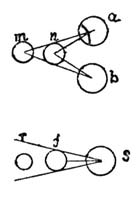 Figure 4 Leonardo da Vinci; Drawing from ƒ534 concerning binocular vision. |
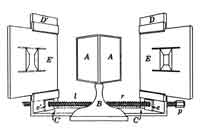 Figure 5 Sir Charles Wheatstone’s Stereoscope, 1833-38. |
The combination of the stereoscope and the camera enabled the production of images with a hitherto unknown quality of verisimilitude and realism which must have been stimulating to say the least for an audience whose acquaintance with photography itself was relatively new. It is tempting to imagine a correspondence between the respective receptions of the first perspectival and stereoscopic images but important to note that the more recent of the two forms was imbricated in a society steeped in the values of commodity and exchange. The experience of looking at a collection of Victorian stereo cards is perhaps characterized by the viewer’s impulse to constantly feed himself or herself with ever more examples and to compare the respective qualities of the illusions. The Wheatstone stereoscope was superseded in the early 1850’s by Sir David Brewster’s lenticular design which enabled the two images to be placed side by side thus allowing more convenient viewing. This in turn was replaced by a stereoscope developed by Oliver Wendell Holmes in 1861, later improved by Joseph Bates, which was cheaper to manufacture and allowed both transparencies and prints to be viewed with consummate ease. The Holmes-Bates stereoscope became the most commonplace variety through which most of the thousands of stereo views produced were destined to be viewed, including Duchamp's Stéréoscopie. The craze for the stereoscope was initiated in 1851 when Queen Victoria expressed her enthusiasm at the Great Exhibition and continued for more than fifty years.
Duchamp’s Stéréoscopie à la main is perhaps untypical of a large proportion of Victorian cards in that when viewed appropriately, the experience of depth is unremarkable. Although it is difficult to generalize when so many differing examples of Victorian stereoscopic photographs are in existence, the illusory space in such cards is often primarily planar with many views tactically incorporating objects or features of the landscape located at successive depths in order to emphasize the spatial sensation and map out the three dimensional, virtual space. Duchamp’s card, on the other hand, is resolutely ‘flat’ in the sense that its only three dimensional clue or cue - the boat - is so far away from the photographer that the space it defines is ambiguous to say the least. It is almost a kind of nonstereo view, one of those cards which would perhaps have been quickly discarded in the stereo enthusiast’s mania for effect. Its effect is essentially contrary or blank and to this blankness, Duchamp added his pencil drawings of the diamond construction. Again, the drawings are at different distances from the edge of the respective photographs so that when viewed through a stereoscope, the construction is projected in front of the picture plane into real space with the seascape receding into pictorial space. The added drawing, moreover, is not stereoscopic in itself as the left and right versions are not constructed perspectivally from two viewpoints. Had this been the case, two subtly differing aspects of the object would have been produced which could then be viewed to full stereoscopic effect. The drawings’ perspective, however, does not imply disparity in viewpoint and so when viewed stereoscopically, there is no additional spatial quality to the drawing itself. It appears flat in the sense of a theatrical stage scenery flat. The only disparity or non-convergence is lateral, that is, Duchamp has simply placed the otherwise identical drawings at different positions from the edges of the respective photographs, hence the drawing’s projection out of pictorial space and into the viewer’s space.
Duchamp’s pencil figures also work to confuse the viewer in a similar manner to the Necker cube illusion common to many discussions about the psychology of perception, in which the implied viewpoint appears to oscillate from above to below thus changing the apparent orientation of the cube (figure 6).[21] This demonstrates the fact that when confronted with an ambiguous perceptual problem, the brain is unable to settle upon an adequately certain reading and alternates between possible readings of the situation. Despite the fact that, unlike the Necker cube’s isometric format, the wire-frame drawing in Duchamp’s stereo card incorporates a conventional perspectival construction which helps to situate the object convincingly within the seascape (especially if the upper half of the drawing is considered in isolation with the horizontal base coinciding with the surface of the sea), the viewer experiences a similar oscillation between possible viewpoints and conflicting readings of the object. Stereoscopic viewing of the image does not help to pin the image down because, as I have just shown, there is no disparity between the two images and hence no three dimensionality to the drawing other than that implied by its perspective construction. Conversely, the ambiguity of the viewer’s relationship to the three dimensional space within the photograph as somewhere out there confounds a clear cut reading of spatial intervals. The above/below division of the horizon in which the picture is partitioned into flat planes serves to further confuse matters. The picture ultimately seems to achieve a confusion of spatial conventions: the perspectival, the stereoscopic and the photographic.
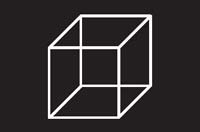
Figure 6
Reconstruction of Louis Necker’s cube illusion of 1832.
In his study of what he calls Duchamp’s Opticéries[22], Jean Clair has pointed out that the drawing could be interpreted as the visual pyramid illustrated in various 17th Century treatises on the art of perspective - as in The Masters of Perspective from Abraham Bosse’s treatise on Desargues of 1648 (figure 7).[23] Bearing in mind what has already been said about the pyramid’s location within the perspective of the seascape, the lower half of this drawing could perhaps be seen as a reflection of the pyramid in the putative sea. The emphatic horizon does recall the ideality of a perspective schema despite the fact that the photographs themselves display little or none of the spatial devices or clichés common to both stereoscopic and perspectival conventions. The image seems curiously related to Merleau-Ponty’s observation that “the road which disappears toward the horizon does not really become narrower” in that it refuses to play along with the conventions of such ways of picturing.[24] Embodying the kind of visual indifference not untypical of Duchamp's work, it reminds the viewer that representations are, indeed, representations. Moreover, if the stereoscopic image is taken as a metaphor for the mental image itself, Duchamp’s Stéréoscopie stresses the cerebral aspect of both representation and perception as the experience of the three dimensional, virtual image takes place solely within the viewer’s brain and visual system. It is an event which requires participation. The picture is no longer only a “referential illusion” implying an object or scene out there, but also a construction within the mind of the viewer.[25] Invoking the distinction Lacan makes between the geométral and the visual as indicative of the fundamental split between perspectival and stereoscopic systems, Clair again notes that the intelligibility of the image no longer resides in the signifier, the perspectival apparatus which enables a diagrammatic reconstruction of the object, but in the signified, the virtual, sensory image “obtained by the synthesis of abstract regular figures...”[26] The vanishing point, picture plane and ideal, monocular viewer implicated in Bosse’s figures are here absorbed into the spectator’s physiological make-up.
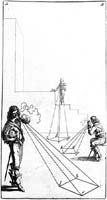
Figure 7
Abraham Bosse The Masters of Perspective, 1648.
Looking again at Duchamp’s Stéréoscopie à la main, it is tempting to see the boat moving across the picture, a movement which would imply a temporal rather than spatial division between the pair of images. Jeff Wall has said that in addition to the photograph being defined by the frame, it could also, or perhaps more appropriately be defined by the shutter, that is, as an instance plucked from a temporal continuum.[27] This notion also calls to mind the invention of the moving picture, a development which like stereoscopy, was made possible by advances in the scientific understanding of vision. Early visual/kinetic toys such as the thaumatrope in which two images, for example, a bird and a cage, were printed on either side of a card disk which when spun, made the two images appear to merge (i.e. with the bird appearing to be perched in the cage), provide an enjoyable demonstration of what is called the persistence of vision. Like the stereoscope, these optical diversions underline the corporeal aspect of vision and have been cited as precursors to the development of film.[28] Although Duchamp denied the influence of moving pictures on works such as his Nude descending a staircase in favour of Jules-Étienne Marey’s chronophotography, he admitted that it was a prevalent topic of discussion at that time.[29] In the mid-1920’s, he returned to stereoscopy and with Man Ray’s assistance, attempted to create a stereoscopic film. The subject of the film was Duchamp’s sculpture, the Rotary Demi-sphere (Precision Optics) of 1925, which consisted of configuration of spirals painted on a half globe connected to an electric motor. When rotated, the Demi-sphere caused a kinetic illusion in the viewer’s visual system which appeared to advance and recede in a pulsating fashion. Commentators have seen this work, the film Anémic Cinéma (1924-26) and the previously mentioned Rotoreliefs (1935) as indicative of Duchamp’s insistence that vision is intimately connected with the mechanisms of desire in that the rhythmic pulsation of the illusion and the sensuousness of the undulating forms almost implies an erotic encounter.[30] This central aspect of Duchamp’s thought finds its apotheosis in Étant Donnés... (1946-66) in which the viewer is literally recast as voyeur. The Demi-sphere provided a suitable subject for stereoscopic representation as it relied on its three dimensionality for its effect unlike the later Rotoreliefs which consisted of a similar configuration of spirals and concentric circles printed onto flat cardboard disks. The latter rely on the viewer’s persistence of vision in order to achieve their effect of three dimensionality and are viewed to best effect with one eye closed. Owing to a problem during the film’s development, only a few frames of Duchamp’s stereoscopic film survived which according to Man Ray’s account, “gave the effect of relief” when viewed through a stereoscope.[31] Toby Mussman records an earlier foray into stereoscopic film during 1920-21, the product of which was intended to be projected anaglyphically (see below for a description of the anaglyph process). He cites Ado Kyrou’s recollection in his book Le Surréalisme au Cinéma of Duchamp’s film which was based around similar lines to his later abortive attempt. The film, apparently titled Moustiques domestiques demi-stock was lost in the 1930’s.[32]
Duchamp was still engaged with the phenomenon of stereoscopic vision at the time of his death in October 1968. His Chéminée Anaglyphe of that year, unlike the Stéreoscopie à la main, is, as its title might suggest, an anaglyph. Developed in 1891 by Louis Ducos de Hauron from an idea originating in the 1850’s, the anaglyph is a type of stereoscopic image in which the two views are superimposed on top of each other with one image usually printed in red/orange and the other in blue/green.[33] The principle is the same as that of the ‘Miracle of the Shadows’ experiment described earlier but here, the image is printed rather than projected. An anaglyph is viewed through special glasses with one red lens and the other lens, blue or green. The principle is that the red filter absorbs the red light reflected by the red image but not the green/blue light reflected by the other image. Consequently, the green and red images will appear black (or more precisely, dark brown) when viewed with the red and green lenses respectively. The two views are fused by the brain and a three dimensional image is experienced. An advantage of the anaglyph over the lenticular stereoscope is that images of various sizes can be created and viewed with relative ease. The system also lends itself to other non-photographic means for producing images. Duchamp’s anaglyph, then, is a drawing in red and blue pencil of a chimney hood which he intended to have constructed for his house in Cadaqués. The stereoscopic effect is slight but crucial to the image’s significance, with the lower opening of the hood appearing to rise in front of the picture plane. Considering Duchamp’s constant fascination with optical tricks or devices and his enthusiasm for anarchic, erotic humour of all types, and noting the chimney opening’s passing resemblance to female genitalia, the little anaglyphic drawing in all its modesty (its qualities of infra mince) seems to invite a humourous, erotic reading. This seems all the more reasonable given the fact that Duchamp had been working on and off during the previous twenty years on Étant Donnés..., a work which is pointedly concerned with the relationship between viewpoint, binocular vision and desire.
Clair cites a passage from a small book by Henri Vuibert entitled Les Anaglyphes Géometriques published by the author in 1912, part of which may illuminate this response to Duchamp’s drawing. (It is worth noting that the Librairie Vuibert in Paris, publisher of the anaglyph book, was the bookshop where Duchamp found the anaglyphic glasses he needed to view his drawing which was to be reproduced as a facsimile to accompany the French edition of Arturo Schwarz’s monograph. A reproduction of the booklet and a facsimile of the drawing can be found in the catalogue to an exhibition of Duchamp’s work in Antwerp in 1991).[34] The relevant passage is as follows and would, one imagines, have appealed to Duchamp's mischievous humour: “But you need still a little more patience, you need to apply yourself to really possess the anaglyph; a moment comes when you see it rise and plant itself in front of you; it looks as if you could touch it, grasp it, and follow its contours with your hand. It’s a strange, striking thing to see.”[35] If such a reading seems reasonable and remembering Duchamp’s proclamation about the spectator making the picture, the viewer of his Chéminée Anaglyphe would seem intimately implicated in the encounter.
Stereoscopy provides a useful focal point for a discussion of the viewer’s relationship to the picture as it emphasizes the grounding of vision within the body. It constitutes a refutation of the static observer and an inversion of the perspective model in that it recreates the depicted object in terms which exploit the viewer’s physiognomy. This is not say that it is any more natural a representational method or that it provides a more truthful experience. On the contrary, the experience of viewing a stereoscopic image draws attention to its artifice, to the fact that it is a representation. One is constantly aware of the instability of the virtual image which reflects even the slightest movement on the part of the viewer. Recalling Lacan’s visual model, the stereoscopic image is less a transparent window than an opaque screen, a screen which, perhaps, conveys as much information about the viewer's perceptual apparatus as it does about the depicted scene. Duchamp’s somewhat sporadic use of the technique sits comfortably with his desire to move the work of art into the world. For an artist who spent much of his working life underground, as he put it, and who aimed in much of his work to put the spectator in the picture, stereoscopy and anaglyphy would seem fitting tools with which to achieve his ends. Bearing in mind his discussion of the creative act mentioned earlier, the difference which constitutes the work and its interpretation by the viewer finds an apt metaphor in the stereoscopic event.
(Tim O’Riley; Representing Illusions - space, narrative and the spectator in fine art practice, Chelsea College of Art and Design - The London Institute, 1998, pp. 56- 65.)
Notes:
[1] Duchamp The Writings of Marcel Duchamp, p. 135-136.
[2] Duchamp Duchamp du Signe Paris: Flammarion 1975, p. 105. John Shearman discusses the reciprocal nature of the artwork/ viewer relationship with regard to the Italian Renaissance and posits the notion of a ‘transitive’ work which takes the ‘engaged’ spectator as its ‘object’: “For now this spectator not only completes, as object, the subject matter of the transitive or affective work of art, but beyond that he becomes an accomplice in its aesthetic functioning.” John Shearman Only Connect... Art and the Spectator in the Italian Renaissance Princeton, New Jersey: Princeton University Press 1992, pp. 57-58.
[3] Duchamp ‘The Creative Act’, The Writings of Marcel Duchamp, pp. 138-140.
[4] Ibid. pp. 138-140.
[5] Octavio Paz ‘Marcel Duchamp or The Castle of Purity’, Marcel Duchamp: Appearance Stripped Bare, p. 86.
[6] from Pierre Cabanne Dialogues with Marcel Duchamp London: Thames & Hudson 1971, p. 41.
[7] Duchamp ‘À L’Infinitif’, reprinted in The Writings of Marcel Duchamp, pp. 74-101, p. 86.
[8] Cabanne, op.cit. p. 39.
[9] Duchamp ‘Regions which are not ruled by time and space...’, a television interview with James Johnson Sweeney, NBC 1956; transcript in The Writings of Marcel Duchamp, p.127-137.
[10] Duchamp ‘À L’Infinitif’, op.cit. p. 83.
[11] Duchamp Notes (ed. P. Matisse), Paris: Centre Georges Pompidou 1980, note no.3: “les porteurs d’ombre travaillent dans l’infra mince.”
[12] Craig Adcock Marcel Duchamp’s Notes from the Large Glass: An N-dimensional analysis Michigan: UMI Research Press 1983, p. 54.
[13] Duchamp ‘Cast Shadows’, The Writings of Marcel Duchamp, p. 55.
[14] Duchamp The Bride Stripped Bare by her Bachelors, Even: a typographic version by Richard Hamilton of MARCEL DUCHAMP’S Green Box (trans. George Heard Hamilton), London and Reykjavik: Edition Hansjörg Mayer 1976, no page numbers given. Also in The Writings of Marcel Duchamp, p. 33.
[15] Rosalind Krauss ‘Notes on the Index: Part 1’, The Originality of the Avant-Garde and Other Modernist Myths, pp. 196-209.
[16] Ibid. p. 198; The Oxford English Reference Dictionary (2nd Edition, Oxford & New York: Oxford University Press 1996) defines ‘index’, amongst other things, as “a symbol shaped like a pointing hand, used to draw attention to a note etc.”
[17] see The Literary Works of Leonardo da Vinci (compiled and edited by J.P. Richter from the original MSS) (eds. I.A. Richter & J.P. Richter), 2 volumes, London: Phaidon 1970: ‘Why a painting can never appear detached as natural objects do,’ ƒ534 from ‘The Practice of Painting’ (1492-1515?), p. 323.
[18] Sir Charles Wheatstone ’On some remarkable, and hitherto unobserved, phenomena of binocular vision’, Philosophical Transactions of The Royal Society of London CXXVIII, 1838, pp. 371-394; see also N.J. Wade Brewster and Wheatstone on Vision (ed.), London: Academic Press 1983.
[19] see S.F. Joseph ‘Wheatstone’s Double Vision‘, The History of Photography 8/4, October/December 1984, pp. 329-332.
[20] Jonathan Crary Techniques of the Observer: On Vision and Modernity in the Nineteenth Century Cambridge, Mass. & London: MIT 1990, p. 122. See also my note (6) in the next chapter (p. 67).
[21] For a discussion of the Necker cube illusion, see R.L. Gregory Eye and Brain, p.12- 14, and Nicholas Wade & Michael Swanston An Introduction to Visual Perception London: Routledge 1991, pp. 187-188.
[22] Jean Clair ‘Opticeries’, October 5, Summer 1978, p.101-112. Originally published as a chapter in Clair’s Duchamp et la Photographie Paris: Editions du Chêne 1977, pp. 80-93.
[23] Abraham Bosse The Universal Manner of M. Desargues of Practising Perspective Paris 1648. Clair uses an example from Jean du Breuil’s La Perspective Practique Paris 1649.
[24] Merleau-Ponty ‘The Experience of Others’, Merleau-Ponty and Psychology, p. 38.
[25] Roland Barthes uses the term 'referential illusion' in his discussion of the relevance of insignificant detail in literary narrative structure. See his ‘The Reality Effect’, The Rustle of Language Oxford: Blackwell 1986, pp. 141-148.
[26] Clair, op.cit. p. 107.
[27] Jeff Wall, from an (as yet) unpublished talk at the Tate Gallery, 5th June 1995.
[28] see Jonathan Crary Techniques of the Observer, for an account of the observer’s changing status throughout the 19th Century which includes a discussion of such devices and criticism of the assumption that these optical diversions led to the development of cinema. He argues that the thaumatrope, the phenakistiscope and similar devices should be seen as distinct from film, related but not necessarily connected to it as through an inevitable lineage.
[29] Cabanne, op.cit. p. 34.
[30] see Rosalind Krauss ‘The Im/pulse to See’, Vision and Visuality (ed. Hal Foster), Seattle: Bay Press 1988, pp50-78; The Optical Unconscious Cambridge, Mass. & London: MIT 1993, pp95-146; Toby Mussman ‘Anémic Cinéma’, Art & Artists 1, July 1966, pp48- 51; Annette Michelson ‘Anémic Cinéma: Reflections on an Emblematic Work’, Artforum XII, October 1973, pp. 64-69.
[31] Man Ray Selfportrait London: A. Deutsch 1963, p. 100; also quoted in Clair, op.cit. p. 111.
[32] Mussman, op.cit. p. 50.
[33] Valyus notes that what later became known as anaglyphy had its origins in a projection system developed in 1858 by J.-C. D’Almeida which incorporated superimposed images projected in corresponding colours. See Stereoscopy, pp. 337 & 355-356.
[34] Marcel Duchamp, deluxe edition of a catalogue accompanying the exhibition of Duchamp’s work at Ronny Van de Velde, Antwerp, 15th September -15th December 1991.
[35] Henri Vuibert Les Anaglyphes Géometriques Paris 1912, pp. 12-13; quoted in Clair, op. cit. p. 106.
